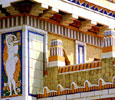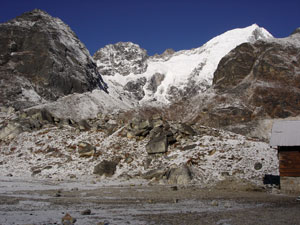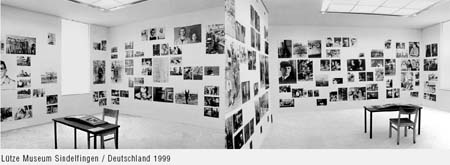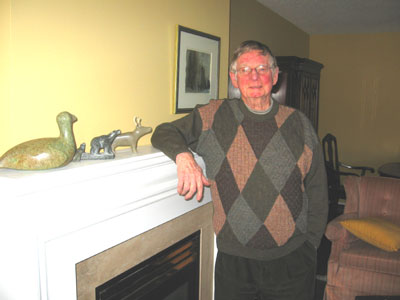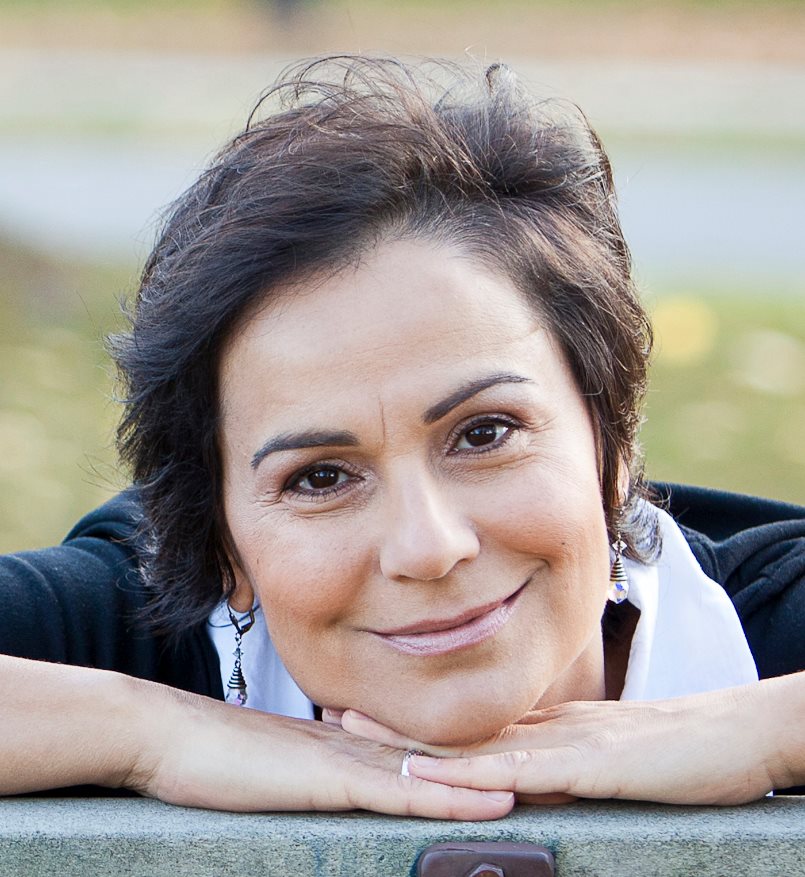John Dowding and I first met a few days ago at Spiaggia Trattoria where I was doing an interview with the owner, Mary Lee. Right in the restaurant she connected me with John who was quietly enjoying a plate of mussels. I sat down with John for about twenty minutes, and as we talked I realized we had a lot in common: a passion for visual arts, photography and travel. John invited me to call him to arrange a visit at his studio another day so he would be able to show me his work.

John Dowding
John Dowding has more than 50 years of arts teaching experience. After taking a degree in fine arts and history at McMaster University in Hamilton, John taught at various high schools in southern Ontario and was the head of the art department at Lorne Park Secondary School in Mississauga from 1969 to 1986, the high school that famous Canadian Olympians Silken Laumann and John Wood graduated from. From 1993 to 1995 he completed a degree in Photographic Arts at Ryerson University, the first year Ryerson had received its official designation as a university.
Photography has been John Dowding’s passion for many years now. During the last five years he has started to discover Cuba, and spent several weeks every winter in this fascinating country. In just a few days (February 2) John will be leaving for Cuba again: to run the “Cuba Now and Then” Photography Workshop and Tour. This ten-day tour will take participants to Havana where they will spend three days taking photos of various historic parts of the city including the Cementario Colon where the students will be practicing infrared photography.
![]() From there the group will move on to the French colonial city of Cienfuegos, then to historic Trinidad de Cuba where they will spend two-and-a-half days. Before returning to Havana, the group will also spend two days in Santiago de Cuba, the second largest city on the island and a former capital of the country. Opportunities will exist to photograph architecture, landscapes and special events such as flamenco and dance shows.
From there the group will move on to the French colonial city of Cienfuegos, then to historic Trinidad de Cuba where they will spend two-and-a-half days. Before returning to Havana, the group will also spend two days in Santiago de Cuba, the second largest city on the island and a former capital of the country. Opportunities will exist to photograph architecture, landscapes and special events such as flamenco and dance shows.
|
|
|
|
Havana discovered
John usually focusses on architectural photography, and also uses special equipment such as infrared film and pinhole cameras to achieve special effects which he teaches to his workshop participants. One of his favourite photos of Havana was of a group of school-age boys who were swimming in the ocean just off Havana’s Malecon. When they came out of the water they were still looking at each other, an image that reminded John of a frieze in a Greek drama.
Over the last few years, John Dowding has formed an intense connection to Cuba, and he said he wanted to “get there before the Americans”. When he arrived in Havana for the first time, he couldn’t believe his eyes, the fascination and attraction were instant. John and I discussed Havana, a city we both know well. To explore the city, John hired a team of local carriage drivers, who were actually a doctor and a nurse. I had spent some time in Havana myself a couple of years ago, to study Spanish at the University of Havana. Just like John, I learned very quickly that the tourism trade is much more lucrative for the locals than practicing their professions. Working as a waiter, tour guide or taxi driver allows Cubans to make in one day a multiple of their usual monthly wages of about $8 to $25 (per month!).
So this team of medical professionals driving a horse carriage for tourists became his tour guides and introduced him to one of the most captivating cities in the New World. The fascination has never left and John has been to Havana, which he calls “a city in a time warp”, several times over the last few years. He will run another photo tour to Cuba from April 6 to 15. Through the same company (Cuba Si Tours) John will take another group of photo enthusiasts to Tuscany later this year, an area to which John refers as one of the cradles of Western civilization, certainly as far as art history is concerned.
|
|
|
|
Havana discovered
After this inspiring conversation I left John to finish his mussels and resolved to see him a few days later at his private studio in order to catch him before his departure for Cuba. So today after my interview with Steve and Paul, the owners of Accommodate The Soul B&B, I headed over to John Dowding’s residence on a quiet historic side street in the Beach.
John’s studio is currently undergoing reconstruction, so some of his images were packed away. But I was able to view several samples of his unique artwork, including some examples of his “PreCambrian” photo series. John explained that he spent some time in a friend’s cottage on Georgian Bay, and as he was feeding the fish he discovered beautifully coloured striated rocks that make up the Canadian shield. Also referred to as the Pre-Cambrian Shield, this ancient geological formation is the earth’s largest area of exposed ‘shield’ rock. The rock formations date back to the Precambrian Era, between 3.5 to 4 billion years ago, long before living creatures ever appeared on this planet. The ancient rocks contain beautifully coloured, striped and twisted formations.
|
|
|
|
The “Pre-Cambrian” series
